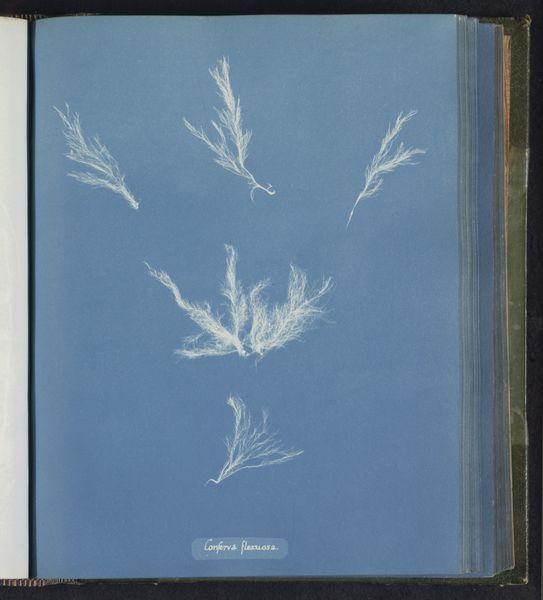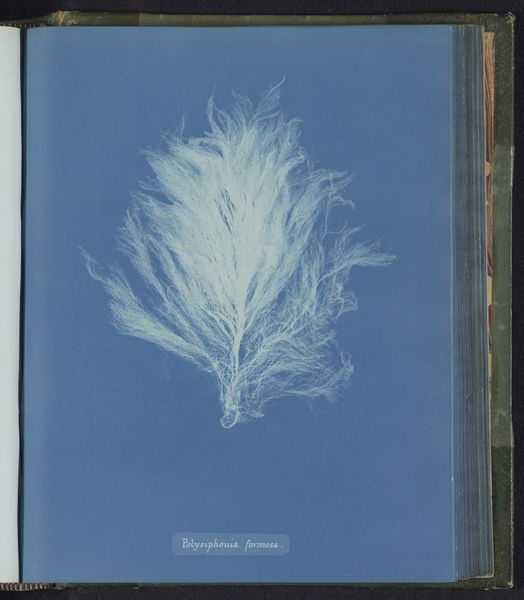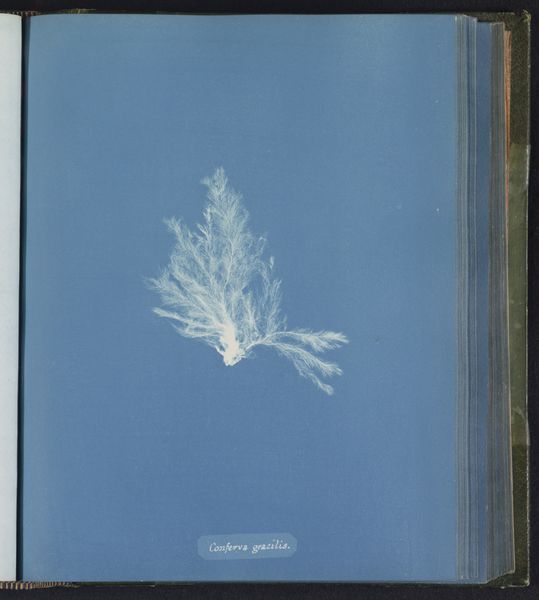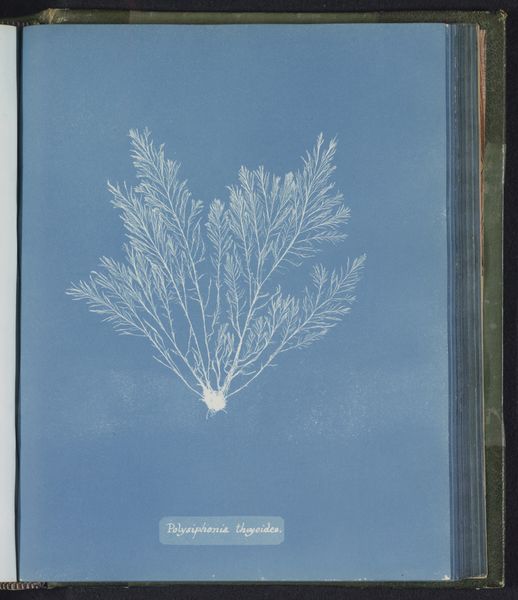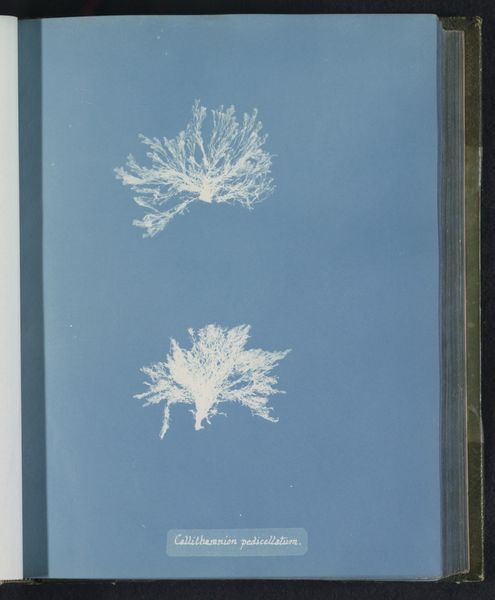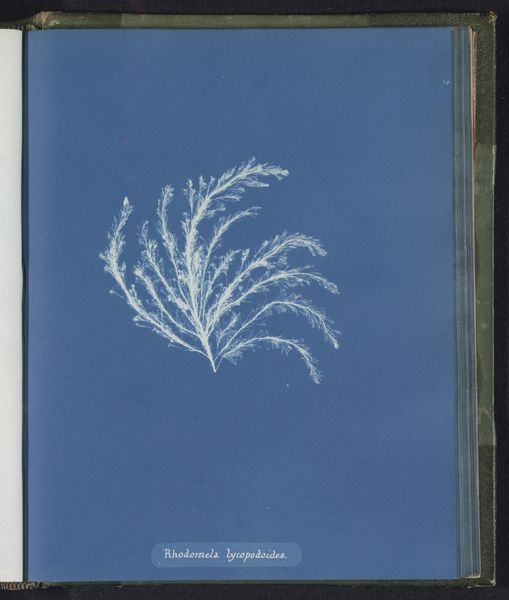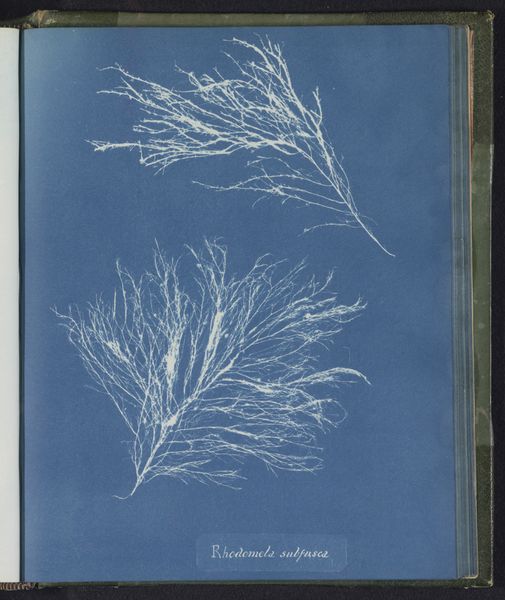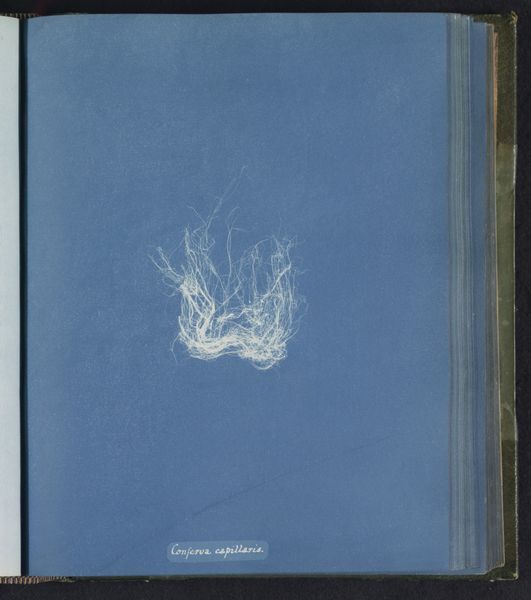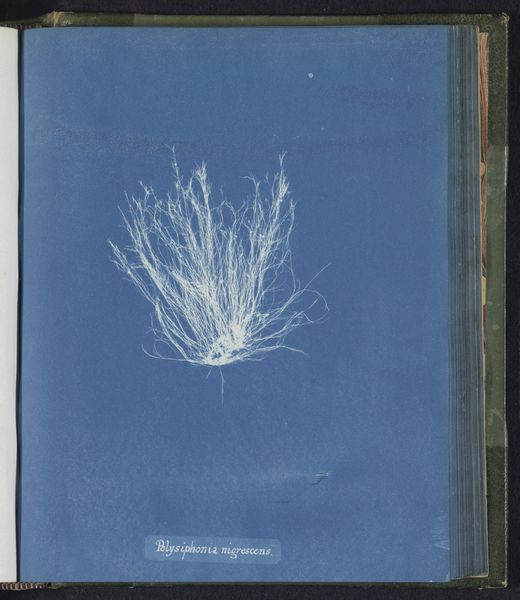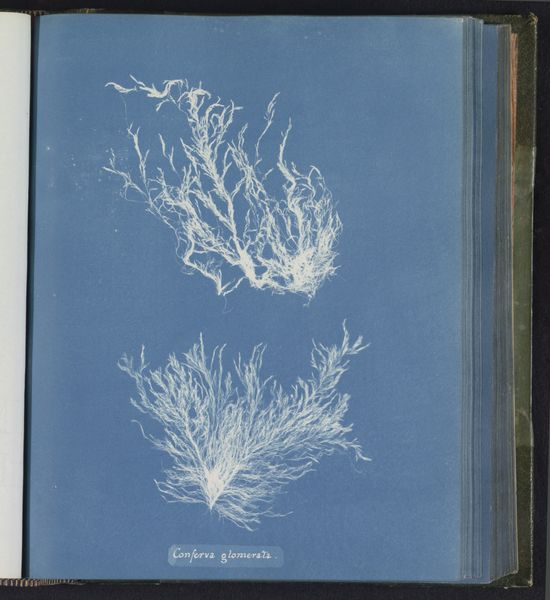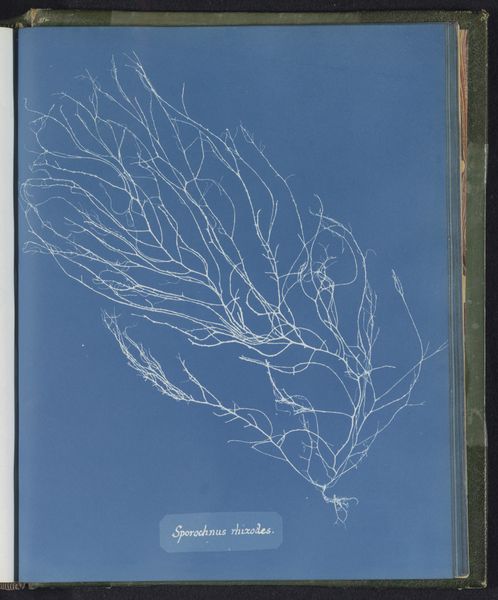
print, paper, cyanotype, photography
# print
#
paper
#
cyanotype
#
photography
#
coloured pencil
#
sketchbook drawing
#
naturalism
Dimensions: height 250 mm, width 200 mm
Copyright: Rijks Museum: Open Domain
Curator: Standing before us is "Polysiphonia violacea," a cyanotype created by Anna Atkins sometime between 1843 and 1853. The ghostly image of seaweed floats on a deep Prussian blue background. What are your immediate impressions? Editor: I’m struck by the delicacy and ethereal quality of the piece. It’s so striking! The stark contrast between the plant and the ground creates a beautifully haunting effect. Curator: Absolutely. Atkins was a botanist, and she essentially combined her scientific interests with the relatively new photographic process of cyanotype. She used the technology to document and classify different species of algae. Her work also speaks volumes about Victorian-era women carving space for themselves within traditionally male-dominated scientific fields. Editor: Exactly. Cyanotype allowed Atkins, as a woman, to become a pioneer in photography and science simultaneously, using a system that gave her agency over her images at a time when options were limited. Looking at it, I cannot help but also notice a subversive angle. Scientific illustration, so rooted in the tradition of accurate documentation, and artistic freedom merged here, especially considering that her choice of vibrant blue and stark white subverts what scientific depictions typically were, thus making room for imagination. Curator: Indeed. Cyanotypes didn’t require a camera; you simply placed an object on the treated paper and exposed it to sunlight. Think about the act of her physically pressing seaweed on the paper— it’s incredibly tactile and personal. Her process connects science, craft, and something almost akin to performance. This particular species name, violacea, referring to violet is so interesting because we perceive this beautiful blue here, of course. Editor: What I admire is how Atkins created her unique and lasting way to contribute to science in this political framework, so early in the history of photography and science. It redefines what we traditionally see as photographic arts. It speaks about resistance. It makes it a unique artwork for our eyes today! Curator: Yes, Atkins’ legacy, and pieces such as "Polysiphonia violacea," go far beyond a simple botanical record. Editor: A confluence of scientific inquiry, social commentary, and profound artistry then, wouldn't you say? I feel like I can almost smell the salty sea and feel the cool paper of the book. Curator: Quite, the way science and art intertwine here, I think is important. It becomes not just a factual, illustrative artifact, but a piece of thoughtful, art.
Comments
No comments
Be the first to comment and join the conversation on the ultimate creative platform.
